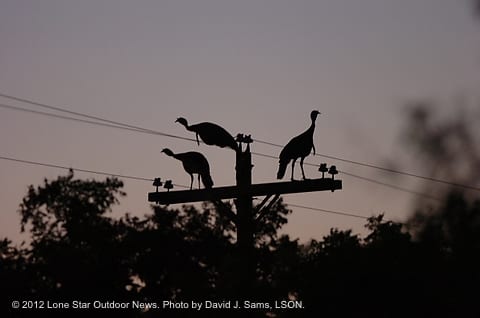 Spring turkey season has started in places like Florida and will commence elsewhere soon, like this weekend in the south zone of Texas. Once we find gobblers to hunt, understanding turkey movements during hunts can make the difference.
Spring turkey season has started in places like Florida and will commence elsewhere soon, like this weekend in the south zone of Texas. Once we find gobblers to hunt, understanding turkey movements during hunts can make the difference.
Turkeys alarm putt (any member of the flock will do this): You’ve been busted, buddy. If the gobbler you want is in range, steady yourself, and shoot it. If not, make that alibi.
Turkeys move toward you: Call and they will come (sometimes). If you have confidence that you’ve been undetected, and that gobbling birds are interested, don’t overdo it. Let them come.
Turkeys favor the area: If you have seen birds in a habitat repeatedly, settle in for the long haul. Take a nap. Call sporadically. Punch the hunting clock, and be there when that gobbler slips in. This is a great tactic when you find a strutting area that is on a loop for the trukey’s roost. Mid-morning is a great time to slip in and call a gobbler to a place he wants to be anyway.
Turkeys were spooked: If every bird that was ever spooked stayed that way we would never get one by the feet. This includes missing a tom. Don’t let this tactical error worry you that much. Make good on not alarming them the next time, but resolve that you’ll get a second chance. It may even be sooner than later.
Turkeys don’t commit to your calls: Gobblers will sometimes drift away, and return. If their body language says they aren’t primed to work to your calls on your watch, realize they’re on turkey time, which spans fly-down to fly-up, and doesn’t involve your worries about getting to work or picking the kid up at school or . . .
Hunt on their watch, and give yourself enough time to do it seriously.

